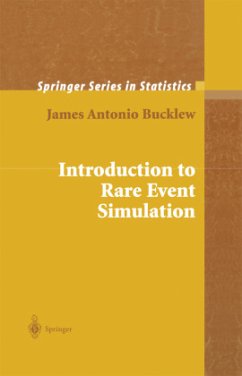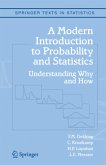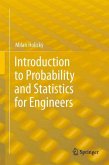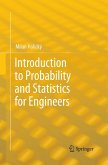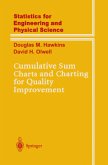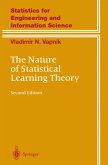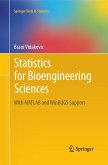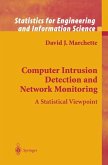This book is an attempt to present a unified theory of rare event simulation and the variance reduction technique known as importance sampling from the point of view of the probabilistic theory of large deviations. This framework allows us to view a vast assortment of simulation problems from a single unified perspective. It gives a great deal of insight into the fundamental nature of rare event simulation. Unfortunately, this area has a reputation among simulation practitioners of requiring a great deal of technical and probabilistic expertise. In this text, I have tried to keep the mathematical preliminaries to a minimum; the only prerequisite is a single large deviation theorem dealing with sequences of Rd valued random variables. (This theorem and a proof are given in the text.) Large deviation theory is a burgeoning area of probability theory and many of the results in it can be applied to simulation problems. Rather than try to be as complete as possible in the exposition of all possible aspects of the available theory, I have tried to concentrate on demonstrating the methodology and the principal ideas in a fairly simple setting. Madison, Wisconsin 2003 James Antonio Bucklew Contents 1. Random Number Generation . . . . . . . . . . . . . . . . . . . . . 1 . . . . . . . . 1.1 Uniform Generators. . . . . . . . . . . . . . . . . . . . . . . . . . . . . . . . . . . . . 1 1.2 Nonuniform Generation . . . . . . . . . . . . . . . . . . . . . . . . . . . . . . . . . 8 1.2.1 The Inversion Method . . . . . . . . . . . . . . . . . . . . . . . . . . . . 8 1.2.2 The Acceptance---Rejection Method . . . . . . . . . . . . 10 . . . . . 1.3 Discrete Distributions . . . . . . . . . . . . . . . . . . . . . . . . 13 . . . . . . . . . . . 1.3.1 Inversion by Truncation of a ContinuousAnalog. . . . . . 14 1.3.2 Acceptance---Rejection . . . . . . . . . . . . . . . . . . . . 15 . . . . . . . . .
From the reviews:
"On the whole, Introduction to Rare Event Simulation succeeds at its stated goal, providing a good overview of importance sampling from the perspective of large deviations." Journal of the American Statistical Association, September 2005
"The main purpose of this book is to present a unified theory of rare event simulation and the variance reduction technique known as importance sampling method devised from the point of view of probabilistic theory of large deviations. ... The methodology of importance sampling estimation based on large deviation theory is exposed in a clear setting, concentrating on the main ideas and outlining the variety of applications, from telecommunications to queueing systems." (Silvia Curteanu, Zentralblatt MATH, Vol. 1057(8), 2005)
"This book deals with a special topic in simulation, the estimation of small probabilities via importance sampling using large deviations theory to design and/or analyze the change of measure. ... serve as a bridge to the quite technical research literature and a help to get started with more challenging examples." (S. Asmussen, Short Book Reviews, Vol. 24(2), 2004)
"The principal method described in this book used to attack the rare event simulation problem is importance sampling, which is a variance reduction technique. ... This Introduction to Rare Event Simulation is in the first place not a book on the theory of rare events as developed in extreme value theory via point processes ... . Instead, it focuses on the mathematics of importance sampling estimators. As such it is mathematically rigorous and very enjoyable." (Michael Falk, Metrika, 2006)
"The central theme of the book is to compute the probability of a so-called rare event. ... Overall the book is pleasant to read. ... The book seems to be well suited to use as a text for a course. ... My general impression of the book is ... predominantly positive and I woulddefinitely recommend this book to be used as course material or as an easily accessible introduction to rare event simulation for anyone with a general knowledge of probability theory." (Henrik Hult, Extremes, Vol. 7, 2004)
"This is a very interesting monograph that attempts to present a unified theory of rare events simulation. Two basic tools used are importance sampling and the theory of large deviations. ... I recommend the book to everybody who is interested in rare events and/or Monte Carlo simulation." (EMS Newsletter, December 2006)
"On the whole, Introduction to Rare Event Simulation succeeds at its stated goal, providing a good overview of importance sampling from the perspective of large deviations." Journal of the American Statistical Association, September 2005
"The main purpose of this book is to present a unified theory of rare event simulation and the variance reduction technique known as importance sampling method devised from the point of view of probabilistic theory of large deviations. ... The methodology of importance sampling estimation based on large deviation theory is exposed in a clear setting, concentrating on the main ideas and outlining the variety of applications, from telecommunications to queueing systems." (Silvia Curteanu, Zentralblatt MATH, Vol. 1057(8), 2005)
"This book deals with a special topic in simulation, the estimation of small probabilities via importance sampling using large deviations theory to design and/or analyze the change of measure. ... serve as a bridge to the quite technical research literature and a help to get started with more challenging examples." (S. Asmussen, Short Book Reviews, Vol. 24(2), 2004)
"The principal method described in this book used to attack the rare event simulation problem is importance sampling, which is a variance reduction technique. ... This Introduction to Rare Event Simulation is in the first place not a book on the theory of rare events as developed in extreme value theory via point processes ... . Instead, it focuses on the mathematics of importance sampling estimators. As such it is mathematically rigorous and very enjoyable." (Michael Falk, Metrika, 2006)
"The central theme of the book is to compute the probability of a so-called rare event. ... Overall the book is pleasant to read. ... The book seems to be well suited to use as a text for a course. ... My general impression of the book is ... predominantly positive and I woulddefinitely recommend this book to be used as course material or as an easily accessible introduction to rare event simulation for anyone with a general knowledge of probability theory." (Henrik Hult, Extremes, Vol. 7, 2004)
"This is a very interesting monograph that attempts to present a unified theory of rare events simulation. Two basic tools used are importance sampling and the theory of large deviations. ... I recommend the book to everybody who is interested in rare events and/or Monte Carlo simulation." (EMS Newsletter, December 2006)

